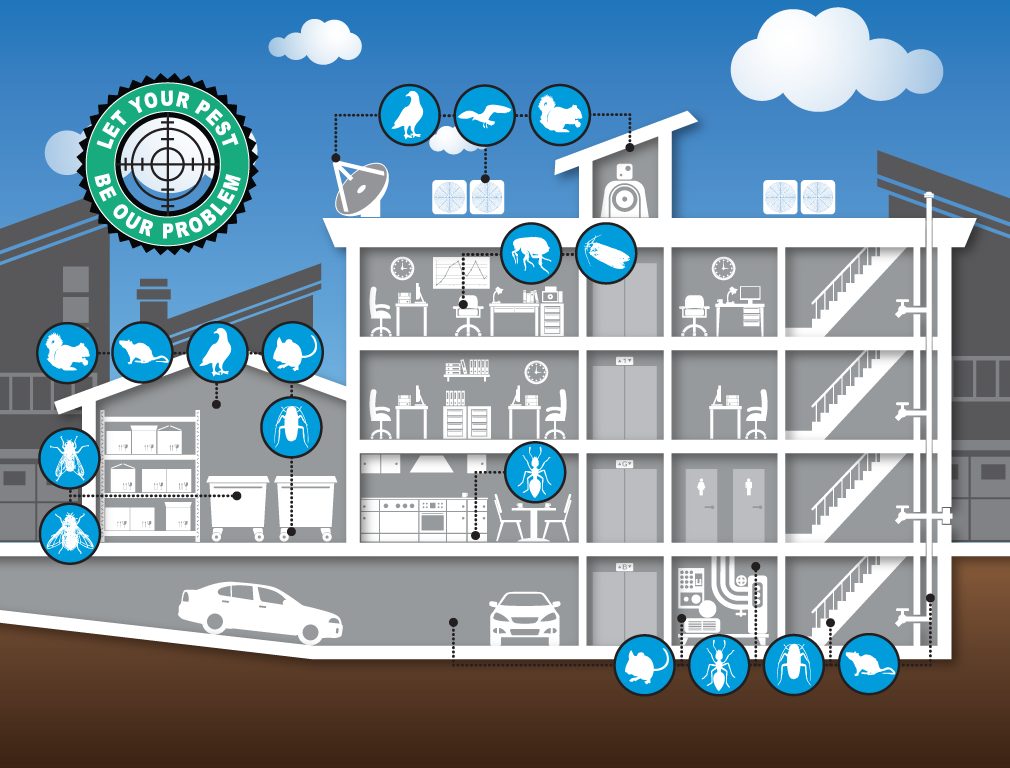The Function Of Pest Exterminators In Environmental Sustainability
The Function Of Pest Exterminators In Environmental Sustainability
Blog Article
Created By-Brooks Dickey
You might think that pest exterminators are only concerned with eliminating bugs, yet their function goes beyond that. They play a crucial part in ecological sustainability.
By utilizing integrated insect monitoring techniques, they not only remove pests yet also safeguard biodiversity.
Additionally, they utilize sustainable bug elimination techniques to mitigate environmental risks.
So, next time you question the importance of insect exterminators, remember their contribution to a greener and healthier planet.
The Value of Integrated Bug Monitoring
You should recognize the relevance of incorporated bug monitoring in maintaining a sustainable atmosphere.
Integrated Pest Administration (IPM) is a method that concentrates on preventing and managing insects while lessening making use of harmful chemicals. By applying Read Homepage , you can properly handle insect populaces without causing harm to the environment.
One essential facet of IPM is the use of biological controls, such as killers and parasites, to naturally manage pest populations. This reduces the demand for chemical pesticides, which can have damaging impacts on wildlife and ecosystems.
Additionally, IPM advertises the use of social and physical controls, such as crop turning and exclusion strategies, to prevent pests from ending up being a problem to begin with.
Shielding Biodiversity Through Parasite Control
We can secure biodiversity via effective insect control methods that focus on the conservation of all-natural ecosystems. By utilizing accountable pest control methods, we can safeguard and keep the fragile equilibrium of species within our environment. Here are three methods which insect control contributes to guarding biodiversity:
- ** Preserving native vegetation and animals ** - By targeting invasive varieties that threaten indigenous plants and animals, bug control helps guarantee the survival of indigenous types and keeps the all-natural diversity of ecosystems.
- ** Protecting against the spread of conditions ** - Controlling insects such as insects and ticks minimizes the danger of illness spreading to wildlife populations, safeguarding biodiversity and avoiding prospective break outs.
- ** Saving threatened types ** - By handling bugs that prey on or compete with jeopardized types, parasite control efforts can improve the opportunities of survival and promote the healing of vulnerable populaces.
With accountable insect control approaches, we can actively add to the preservation of biodiversity and the sustainability of our environment.
Mitigating Environmental Risks With Sustainable Bug Extermination Approaches
By utilizing sustainable parasite extermination techniques, you can successfully minimize ecological dangers while making sure the security and wellness of both humans and the natural community. Standard insect control methods often include using hazardous chemicals that can have damaging effects on the setting.
Nonetheless, lasting insect extermination techniques concentrate on decreasing these risks by using eco-friendly alternatives. For rodent exterminators , integrated bug administration (IPM) strategies prioritize the use of non-toxic and naturally degradable products, in addition to natural killers to manage pest populaces. This strategy not only lowers the unfavorable influence on the setting but also aids to maintain the delicate balance of the community.
Furthermore, lasting insect elimination methods promote the preservation of biodiversity by targeting certain parasites without harming beneficial microorganisms. By adopting these methods, you can contribute to a much more sustainable and environmentally friendly method to pest control.
Conclusion
You are the pest exterminator, the guardian of nature's consistency. With incorporated insect monitoring, you balance the delicate ecological community, ensuring the survival of varied types.
Via lasting techniques, you minimize ecological risks, maintaining the fragile equilibrium undamaged.
Like a symphony conductor, you manage the rhythm and circulation, securing the biodiversity that dancings in ideal harmony.
With every action you take, you create a globe where nature flourishes, where pests pull away, and where sustainability reigns supreme.
